Navy Petty Officer 3rd Class Michael Aguda and Chief Petty Officer Joan Revilla direct the landing of a Marine Corps CH-53 Sea Stallion helicopter on the flight deck of the USS New Orleans in the Philippine Sea, Sept. 10, 2020.
Providing up-to-date information, news and original content on American Military issues.
Navy Petty Officer 3rd Class Michael Aguda and Chief Petty Officer Joan Revilla direct the landing of a Marine Corps CH-53 Sea Stallion helicopter on the flight deck of the USS New Orleans in the Philippine Sea, Sept. 10, 2020.
Sept. 11, 2020
The Navy will christen one of its newest attack submarines, the future USS Montana (SSN 794), during a 10 a.m. EDT ceremony Saturday, Sept. 12, 2020, at Newport News Shipbuilding, a division of Huntington Ingalls Industries, in Newport News, Virginia.
The principal speaker will be Under Secretary of the Navy (Acting) Gregory J. Slavonic. Ms. Sally Jewell, former Secretary of the United States Department of Interior, will serve as the ship’s sponsor. In a time-honored Navy tradition, she will christen the ship by breaking a bottle of sparkling wine across the bow and state, “in the name of the United States I christen thee.”
“The future USS Montana will play an important role in the defense of our nation and maritime freedom,” said Slavonic. “She stands as proof of what teamwork – from civilian to contractor to military – can accomplish. I am confident USS Montana and her crew will ensure our Navy remains safe and strong to proudly serve our nation’s interest for decades to come.”
The future USS Montana (SSN 794) honors the Treasure State. She will be the second commissioned warship bearing the name. The first USS Montana (ACR-13), an armored cruiser, was also built at Newport News Shipbuilding and commissioned July 1908. She served in the Atlantic and Mediterranean, landed Marines during unrest in Haiti in 1914 and escorted convoys during World War I. She was decommissioned in 1921.
Construction of the current Montana began April 2015 and is the third of the ten Block IV Virginia Class submarines.
Virginia Class submarines are built to operate in the world's littoral and deep waters while conducting anti-submarine warfare; anti-surface ship warfare; strike warfare; special operation forces support; intelligence, surveillance and reconnaissance; irregular warfare; and mine warfare missions. Their inherent stealth, endurance, mobility and firepower directly enable them to support five of the six maritime strategy core capabilities – sea control, power projection, forward presence, maritime security and deterrence. They are replacing older Los Angeles Class submarines as they retire.
Media may direct queries to the Navy Office of Information at (703) 697-5342. More information about the Virginia-class Attack Submarines is available online here.
Additional information about the Naval History of Montana can be found online here.
Sept. 11, 2020 | BY TERRI MOON CRONK , DOD News
Three senior Defense Department officials took part in a discussion about missile defense capabilities in 2030 and the demands of tomorrow at the Missile Defense 2030 symposium.
Yesterday's panel included James H. Anderson, acting undersecretary of defense for policy; Navy Vice Admiral Jon A. Hill, director of the Missile Defense Agency; and Army Lt. Gen. Daniel L. Karbler, commander of the Army Space and Missile Defense Command.
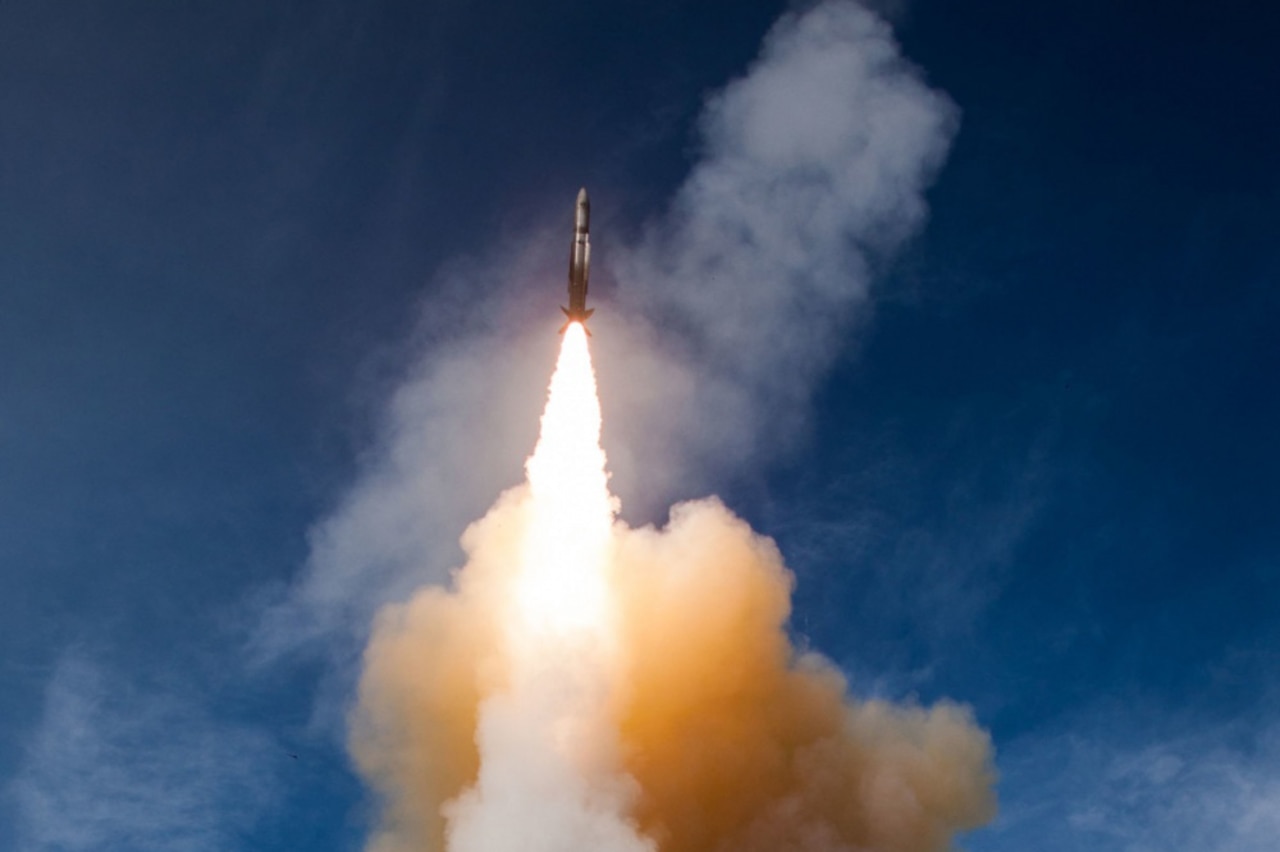
When you get into ground-based missile defense or midcourse defense for protection of the United States, we are working very Intensely on the service-life extension program, along with the reliability program that takes us beyond just the analytical, he added. "We now have hardware and equipment tied into that thanks to very great support coming from Congress, as well as the department."
That support, Hill said, will help DOD increase and extend the life of the existing fleet, which he said is vital.
"While we have to also compete in parallel with the next generation interceptor, … by closing that gap with a very strong liability program for the fleet today, and bringing on a new interceptor that will tie into the ground systems and into the sensors, [it] is going to be pretty formidable," Hill said.
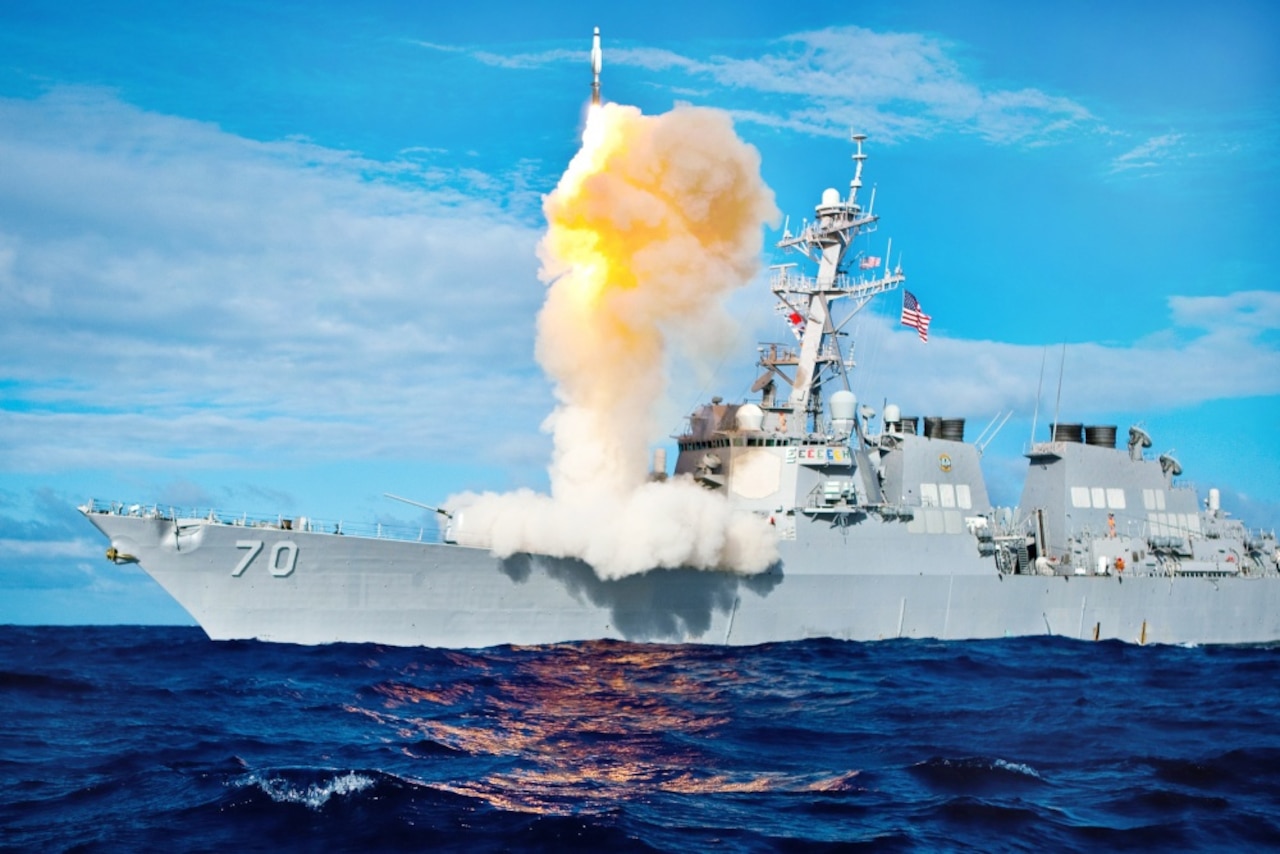
The joint kill web has to enable DOD's defensive systems and its offensive systems, Karbler said.
"If the adversary launches at us, we're going to the joint kill web [to] enable us to censor any sensor by shooter to engage," he said. He noted it also will allow DOD, integration-wise, to offensively respond with whatever capability that it might have from air to surface.
"The Army is working very hard on long-range precision fires to be able to counter what that adversary brings to us," Karbler said.
In terms of DOD's vision for 2030, the department will seek out those opportunities where it makes sense to work with allies and partners in missile defense, Anderson said.
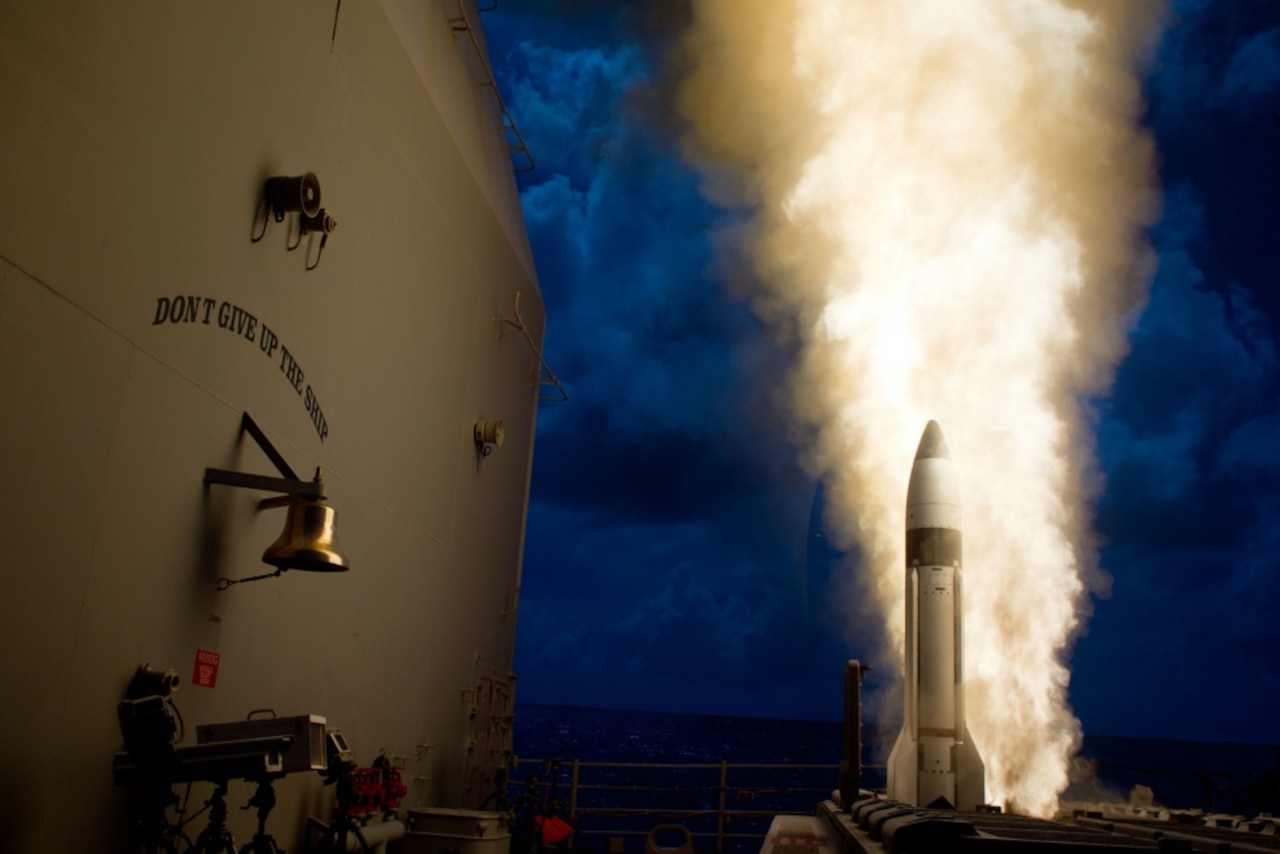
"We talked before about defending the homeland. What's also very critical when we talk about missile defense is the regional context," he noted.
Anderson also said both China and Russia would seek to overwhelm the U.S. and its allies early in a particular theater and impede the flow of allied forces.
Because of this, it's vital in a regional context for the United States to have a robust integrated air and missile defense. "That's why we have had these collaborative efforts, and we will seek out them going forward, as well," he added.
Sept. 11, 2020
Today, the Department of Defense, on behalf of the Department of Health and Human Services, signed contracts with a maximum value of $136 million with five American businesses to manufacture up to 15 million Covid-19 reusable isolation gowns for the replenishment of the HHS-managed Strategic National Stockpile.
Delivery of the gowns will be complete by January 2021 ensuring HHS is poised to meet the Nation’s critical medical needs.
Today’s contract awards, along with additional planned US-sourced gown contracts, will boost the domestic industrial base for textiles and reduce dependency on foreign sources for critical personal protective items. There was robust competition for the contracts, which were executed by the Defense Logistics Agency.
All of the gowns procured adhere to the Berry Amendment, an acquisition regulation that requires DOD to give preference to domestically produced clothing and textiles. All of the contract awardees are American small businesses, with the largest portion of the quantities going to a woman-owned small business.
An F/A-18E Super Hornet launches from the flight deck of the aircraft carrier USS Ronald Reagan in the Philippine Sea, Sept. 7, 2020.
The guided missile destroyer USS Mustin conducts a replenishment with the aircraft carrier USS Ronald Reagan in the Philippine Sea, Sept. 7, 2020.
Navy Seaman Isaiah Washington climbs into the cockpit of an F/A-18F Super Hornet on the flight deck of the aircraft carrier USS Ronald Reagan in the Philippine Sea, Sept. 9, 2020.
Air Force Staff Sgt. Patrick Grandison and military working dog Tek exit a UH-1N Iroquois during aircraft familiarization and detection training at Sagami Depot in Sagamihara, Japan, Sept. 2, 2020.
Arizona Army National Guardsmen prepare boxes of groceries for delivery in Phoenix, Sept. 8, 2020, as part of COVID-19 relief efforts.
Navy Petty Officer 2nd Class Camille Harrington takes an advancement examination at Naval Base Ventura County, Calif., Sept. 9, 2020. The examinations were administered with a tailored approach to ensure safety during the COVID-19 pandemic.
Sept. 11, 2020
The Republic of Korea (ROK) Ministry of National Defense (MND) and the United States (U.S.) Department of Defense (DOD) held the 18th Korea-U.S. Integrated Defense Dialogue (KIDD) September 9-10, 2020. Due to ongoing travel restrictions related to the coronavirus (COVID-19) pandemic, the two sides held a robust exchange on a range of ROK-U.S. Alliance priorities via secure video teleconference. ROK Deputy Minister Chung Sukhwan and David Helvey performing the duties of Assistant Secretary of Defense with U.S. Deputy Assistant Secretary of Defense for East Asia Heino Klinck led their respective delegations.
The leaders underscored the importance of strengthening the combined readiness posture of the ROK-U.S. Alliance to address the current security environment on the Korean Peninsula as well as mutual regional security concerns. The two sides also committed to continue bilateral security cooperation including senior-level policy consultations, information sharing, and personnel exchanges to promote peace and stability on the Korean Peninsula and throughout Northeast Asia.
Concurring on the importance of establishing stable access to training facilities and other critical sites and resources as essential to maintaining a steadfast combined defense posture, the two leaders also reviewed the progress made in the combined joint multi-purpose live firing range joint study and discussed the way ahead to ensure continued progress in advance of this fall’s Security Consultative Meeting (SCM).
Both sides also reaffirmed the common objectives of establishing permanent peace on the Korean Peninsula and the complete denuclearization of North Korea. The delegations agreed to continue close coordination on the implementation of the Armistice Agreement, Comprehensive Military Agreement (CMA), and other relevant agreements.
The two leaders additionally reviewed the progress made in relocating the ROK-U.S. Combined Forces Command (CFC) headquarters and committed to expeditiously pursue the CFC HQ relocation.
The delegation heads affirmed the progress made in preparation for eventual wartime OPCON transition. They also concurred that the Combined Command Post Training (CCPT) in August was a step toward realizing the conditions necessary for FOC certification. Both sides recognized the importance of the ROK forces’ acquisition of critical military capabilities and committed to continue joint assessments through meetings of the special Permanent Military Committee (sPMC) to ensure a successful outcome. Both sides will provide a progress report on COTP requirements and discuss next steps at the SCM later this year.
The two sides celebrated the recent completion of the Comprehensive Joint Study on Extended Deterrence and discussed a range of issues to improve the Alliance’s effective deterrence against North Korean nuclear and missile threats. Moving forward, the two sides committed to enhancing the efficacy of the tailored deterrence strategy.
Both delegations noted that the KIDD reaffirmed the steadfast solidarity of the ROK-U.S. Alliance and further strengthened coordination between the respective defense authorities of the two countries. The leaders pledged to advance the aforementioned issues at the SCM in October, 2020.
Sept. 10, 2020
Secretary of Defense Mark T. Esper announced today that the president has made the following nomination:
Marine Corps Maj. Gen. Patrick M. Shanahan for appointment to the grade of lieutenant general with assignment as director, Joint Artificial Intelligence Center. Shanahan is currently serving as deputy chief of computer network operations, National Security Agency, Fort Meade, Maryland.
Sept. 11, 2020
Secretary of Defense Dr. Mark T. Esper announced today that the president has made the following nomination:
Air Force Maj. Gen. Robert J. Skinner for appointment to the grade of lieutenant general with assignment as director, Defense Information Systems Agency/commander, Joint Forces Headquarters-Department of Defense Information Network, Fort George G. Meade, Maryland. Skinner is currently serving as director, Command, Control, Communications, and Cyber, J6, Headquarters United States Indo-Pacific Command, Camp H.M. Smith, Hawaii.
Sept. 10, 2020
Secretary of Defense Mark T. Esper announced today that the president has made the following nomination:
Navy Vice Adm. Lisa M. Franchetti for reappointment to the grade of vice admiral with assignment as director for strategy, plans, and policy, J-5, Joint Staff; and senior member, United States Delegation to the United Nations Military Staff Committee, Pentagon, Washington, District of Columbia. Franchetti is currently serving as deputy chief of naval operations for Warfighting Development, N-7, Office of the Chief of Naval Operations, Washington, District of Columbia.
An Air Force B-52H Stratofortress leads a formation of U.S. and Dutch aircraft over the North Sea during Point Blank, a recurring exercise.
Sept. 11, 2020
Principal Deputy Assistant Secretary of State for South and Central Asian Affairs Dean Thompson and Principal Deputy Assistant Secretary of Defense for Indo-Pacific Security Affairs David Helvey joined their Indian counterparts today for a virtual Intersessional Meeting of the U.S.-India 2+2 Ministerial Dialogue. The two sides welcomed the opportunity to discuss the U.S.-India Comprehensive Global Strategic Partnership, noting increased closeness and cooperation across multiple areas of the bilateral relationship.
The United States underscored the importance of India’s status as a Major Defense Partner, growing military-to-military cooperation, and other defense priorities. The two sides discussed a range of bilateral, regional, and multilateral issues, including combating COVID-19, counterterrorism, India’s membership on the UN Security Council, support for good governance and sustainable development in the Indo-Pacific region, and efforts to counteract recent destabilizing actions in South Asia and the broader Indo-Pacific region. Both sides agreed to further strengthen consultation through United States-India-Australia-Japan Quadrilateral consultations.
Principal Deputy Assistant Secretary Thompson and Principal Deputy Assistant Secretary Helvey pledged to continue working with their Indian counterparts to advance the U.S.-India partnership for the benefit of both countries, the region, and the world. They looked forward to preparing for the U.S.-India 2+2 Ministerial Dialogue later this year.
Soldiers train and certify on a soldier-borne sensor at Schofield Barracks, Hawaii, Sept. 3, 2020. The sensor enables soldiers to deploy a micro-drone to gain situational awareness and observe where a soldier cannot physically reconnoiter.
Sept. 11, 2020
Deputy Assistant Secretary of Defense for South and
Southeast Asia Reed Werner and Maldivian Minister of Defense Mariya Didi
signed the “Framework for U.S. Department of Defense-Maldives Ministry
of Defence Defense and Security Relationship” in Philadelphia on
September 10.
The Framework sets forth both countries’ intent to deepen engagement and
cooperation in support of maintaining peace and security in the Indian
Ocean, and marks an important step forward in the defense partnership.
DASD Werner and Minister Didi also discussed U.S. support for the
Maldives’ response to COVID-19 and areas for future cooperation, and
agreed to work toward scheduling the first Defense and Security
Dialogue. Both sides reiterated their commitment to a free and open
Indo-Pacific that promotes the security and prosperity of all nations in
the region.
Sept. 11, 2020
Statement attributed to Ms. Jessica Maxwell, Department of Defense spokesperson:
Today the Department is announcing two Defense Production Act Title III actions to sustain and strengthen essential domestic industrial base capabilities and defense-critical small businesses. These actions will help to retain critical workforce capabilities throughout the disruption caused by COVID-19 and to restore some jobs lost because of the pandemic. The Department remains closely partnered with FEMA and HHS, providing almost $2.9 billion in life-saving medical services, supplies and equipment to service members and federal agencies in the nation's whole-of-government approach to the pandemic.
DOD announces $1.9 million Defense Production Act Title III Agreement with Control Vision, Inc to Strengthen Domestic Microelectronics Industrial Base
As part of the national response to COVID-19, the Department of Defense has signed a $1.9 million agreement with Control Vision, Inc. to sustain and advance domestic capabilities for aerospace grade optical sensors during the COVID-19 pandemic.
Using funds authorized and appropriated under the CARES Act, this DPA Title III investment will maintain and protect aerospace grade advanced optical sensor domestic industrial base capabilities essential for national defense. This project will fund Control Vision, Inc., a Arizona-based small business, to develop and mature an optical payload and produce a unit for a future flight test. This investment will improve future data gathering opportunities on flight tests by enabling improved sensors and software for future missions and ensure the U.S. Government continues to have access to this critical domestic capability. Additionally, this project will enable Control Vision, Inc. to retain high skill staff positions put at risk during the pandemic that would be difficult to fill if lost.
Control Vision, Inc.’s headquarters and manufacturing is in Tucson, AZ, which is the principal place of performance for this project.
DOD announces $1 million Defense Production Act Title III Agreement with Radio Design Group to Strengthen Domestic Shipbuilding Industrial Base
As part of the national response to COVID-19, the Department of Defense entered into a $1 million agreement with Radio Design Group to sustain critical domestic industrial base capability and capacity for U.S. Navy communication equipment and manufacturing.
Radio Design Group provides the U.S. Navy with cutting edge communications equipment that is vital for maritime missions. Using funds authorized and appropriated under the CARES Act, this DPA Title III investment will allow Radio Design Group to continue production of critical communications equipment and invest in future communications capabilities to drive future cost savings for the U.S. Government while ensuring the U.S. Navy continues to have access to this vital domestic capability. Additionally, this investment will enable Radio Design Group to retain critical workforce capabilities throughout the disruption caused by COVID-19 and to restore some jobs lost due to the pandemic.
This investment will ensure the U.S. Government retains production and supply chain continuity of a vital, domestic small-business supplier of communication equipment to meet the needs of the nation while maintaining and protecting a skilled workforce during the disruption caused by the pandemic.
Radio Design Group headquarters in Grants Pass, Oregon will be the principal place of performance.
Website resources:
The Norfolk Naval Shipyard's mission is to support the U.S. Navy by fixing ships and submarines and returning them to the fleet. This goal became more challenging to meet with the emergence of COVID-19 and its impact on shipyard employees. In early July, SurgeMain stepped up to assist with the first phase by mobilizing more than 480 Navy Reserve sailors.
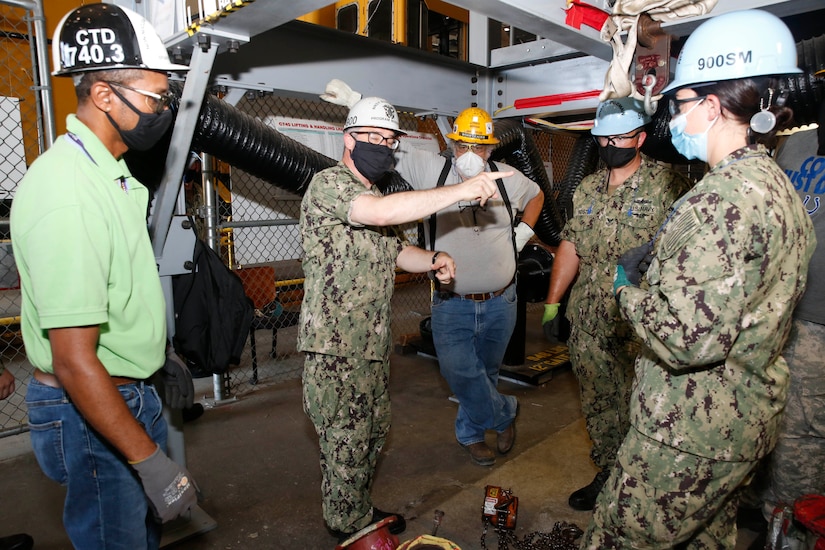
"This mobilization is Naval Sea Systems Command's [NAVSEA] COVID-19 recovery response," said Navy Lt. Cmdr. Manny Sayoc, SurgeMain program manager. "Our program has been around for 15 years, and this is the first time we have been mobilized to help out with shipyard production."
The sailors reported for duty in several phases. More than 1,620 SurgeMain sailors are being mobilized in total to the four public naval shipyards based on production resource demands.
"This initiative required a culmination of several months of co-preparation between the shipyards, Navy Reserve units, the Secretary of the Navy's office, and many major commands in between," Sayoc said. "Countless days of planning and coordination were spent considering production, personnel administration and benefits, support and leadership staff, logistics and transportation, supply, berthing, training, and COVID-19 protective measures."
Sayoc pointed out that many of the sailors have come from across the country on short notice — a lot of them under the minimum mandatory notification period.
"They have left their civilian jobs, said goodbye to their family and loved ones, and jumped into the fray of uncertainty to serve their country right here in Portsmouth, Virginia," he said.
With the help of its local reserve units, SurgeMain called upon its most senior local sailors first, some of whom have worked in similar civilian positions.
"We wanted to provide deckplate leadership and guidance of local knowledge to help our incoming reserve workforce," Sayoc explained.
As part of the mobilized force, several people also went on short-term military orders to serve as instructors, drivers, administrative staff and logistical support.
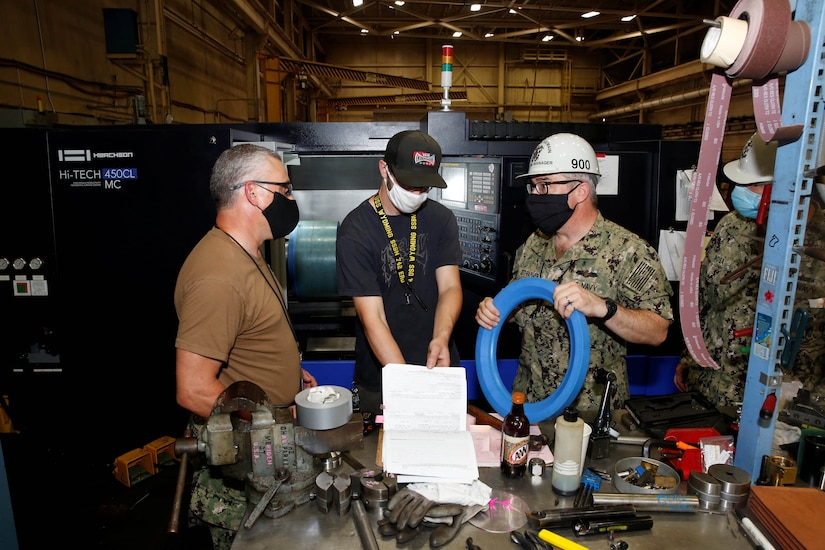
"We never expected to have to pull off a project as big as this, but we had a strong leadership staff and everyone wanted this mobilization to be a success," he said.
Safeguarding the reservists against COVID-19 was among the most unique and challenging components in engaging this initiative.
"In order for us to help backfill this hole of work, we have — and still need to manage our precautionary methods of minimizing exposure of transmission while staying on task," said Navy Capt. Jonathan Jett-Parmer, SurgeMain east regional executive officer. "Methods to do so include managing bubble-to-bubble transitions, putting people on restricted movement when it is applicable, providing personal protective equipment, and all sorts of means to protect our SurgeMain sailors and the community," Sayoc added.
Despite these challenges, the drive to help accomplish the mission is still present with SurgeMain's personnel, and the goal of the mobilization is not lost on them.
"These sailors are on orders to be here for 15 months," Jett-Parmer explained. "It is going to be a long mobilization to help dig the Navy out of this workload caused by the pandemic, but it's the right thing to do."
There is one goal that SurgeMain has when it comes to this mobilization: fix Navy ships and get them back to the fleet.
"We are in a time of crisis," Jett-Parmer explained. "There has been a large [number] of irreplaceable man-days lost because of this virus."
"That is the purpose of this mobilization," Sayoc added. "Our program has been training and preparing for such a situation such as this."
SurgeMain sailors might not be in the shipyard long-term, but they are here to help while they are at NNSY. Civilians and SurgeMain sailors will fight the good fight against this backlog and work together to accomplish the mission.
(Hannah Bondoc is assigned to the Norfolk Naval Shipyard)
Sept. 11, 2020 | BY AIR FORCE AIRMAN 1ST CLASS DOMINIC TYLER
"Our pharmacy hasn't closed down at all throughout COVID-19," Air Force Maj. Brandy Renner, 56th MDG pharmacy flight commander, said. "We made an on-the-spot shift in operations to keep our patients safe while still maintaining 100% of our services to 100% of our beneficiaries."
In the initial days of COVID-19, the pharmacy's goal was to provide services to patients with the least amount of physical interaction possible. The pharmacy staff immediately implemented minimum manning which reduced the number of people on a shift by half.
The pharmacy supports a patient population of about 130,000 beneficiaries associated with the Defense Department mission, including active duty members and their families, retirees and civilians. They serve patients from all over the Phoenix area and process about 380,000 prescriptions a year.
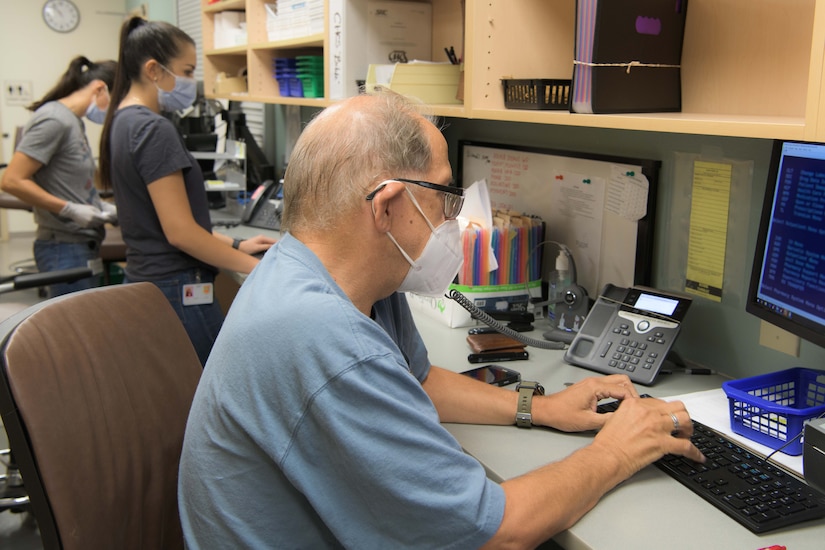
According to Air Force Master Sgt. Stephen Iles, 56th MDG pharmacy flight chief, COVID-19 might have brought on unique challenges, but this only proved his teams' ability to adapt and innovate on the fly.
"In the beginning, things seemed to be changing every day," Iles said. "But we haven't skipped a beat as far as the service we provide to all of Luke's beneficiaries. It really goes to show how flexible our team is and how efficient we can be, even with half the staff."
Cryst'al Williams, 56th MDG pharmacy technician, believes the most notable change was the closing of the pharmacy lobby and implementing a new drive-thru system.
"After we got the drive-thru window working and figured out where to direct traffic, everything was pretty much the same," Williams said. "It was something new, but things happened, and we just had to roll with it and come up with the right solutions."
Over a six-week period, the pharmacy filled 33,500 prescriptions and helped about 600 vehicles per day in the drive-thru while at minimum staffing.
According to Renner, along with the significant increase of drive-thru traffic came an increase in traffic on the phone lines. Before COVID-19, the pharmacy could only answer about 100 calls a day to activate prescriptions.
She added that with the increased demand for patients to activate prescriptions over the phone, the pharmacy has implemented a new phone queuing system that allows patients to call and wait for a technician rather than receiving a busy tone. This enabled pharmacy technicians to service 250 to 300 calls a day with a wait time of less than 15 minutes per call.

Williams explained that COVID-19 may have slightly changed pharmacy operations, but getting the right medicines to her patients in a timely manner is of the utmost importance.
"We're dealing with people's health here, and that's extremely important," Williams said. "That's why we've remained open throughout COVID-19. I'm happy to be at the forefront of getting people the medication they need."
Though COVID-19 may bring new problems to light, Iles said this pandemic presents an opportunity for his team to innovate and grow. He said the unique challenges have given him great confidence in the 56th MDG pharmacy's ability to thrive in the future.
"The pharmacy is constantly working to innovate our processes to make obtaining our services easier and safer for our patients, and we want to be their choice for their prescription needs," Iles said. "COVID-19 doesn't change our overall mission. We care for our own. We are here to maintain the Luke warfighters' readiness through health care."
(Air Force Airman 1st Class Dominic Tyler is assigned to the 56th Fighter Wing).
Sept. 11, 2020
Secretary of Defense Dr. Mark T. Esper spoke with Bangladesh Prime Minister and Minister of Defense Sheikh Hasina over the phone today on September 11, 2020. During the call, Secretary Esper commended the Prime Minister for Bangladesh’s response to the COVID-19 pandemic and the recent goodwill missions to its neighbors. The two leaders discussed their shared commitment to a free and open Indo-Pacific that ensures the sovereignty of all nations, and specific bilateral defense priorities including maritime and regional security, global peacekeeping, and initiatives to modernize Bangladesh’s military capabilities. Both leaders expressed their commitment to continue building closer bilateral defense relations in support of shared values and interests.